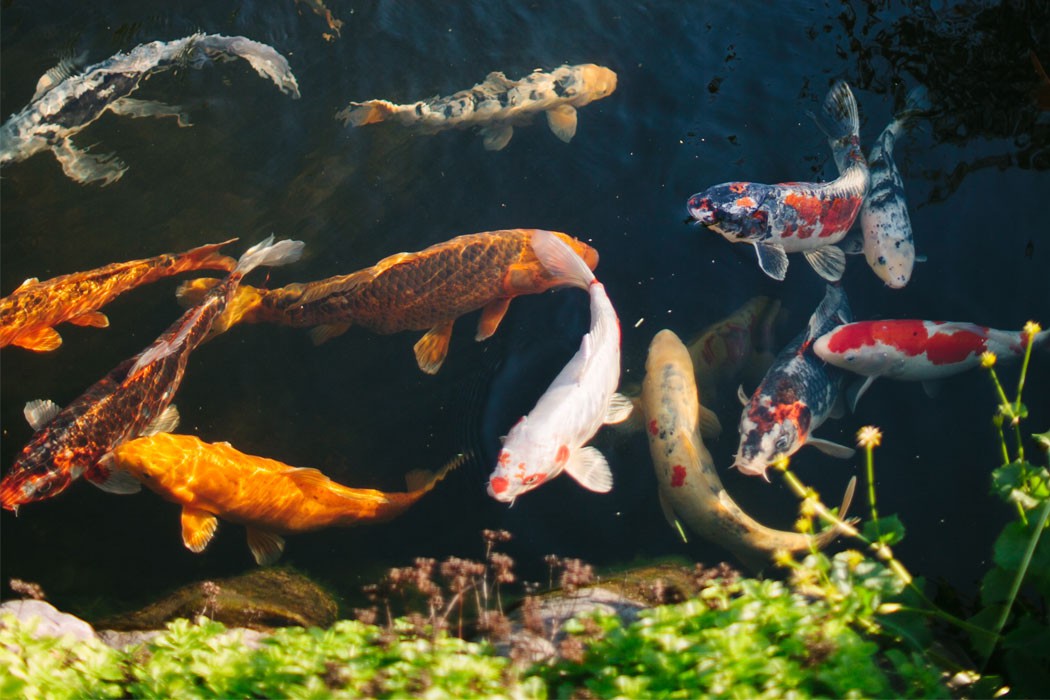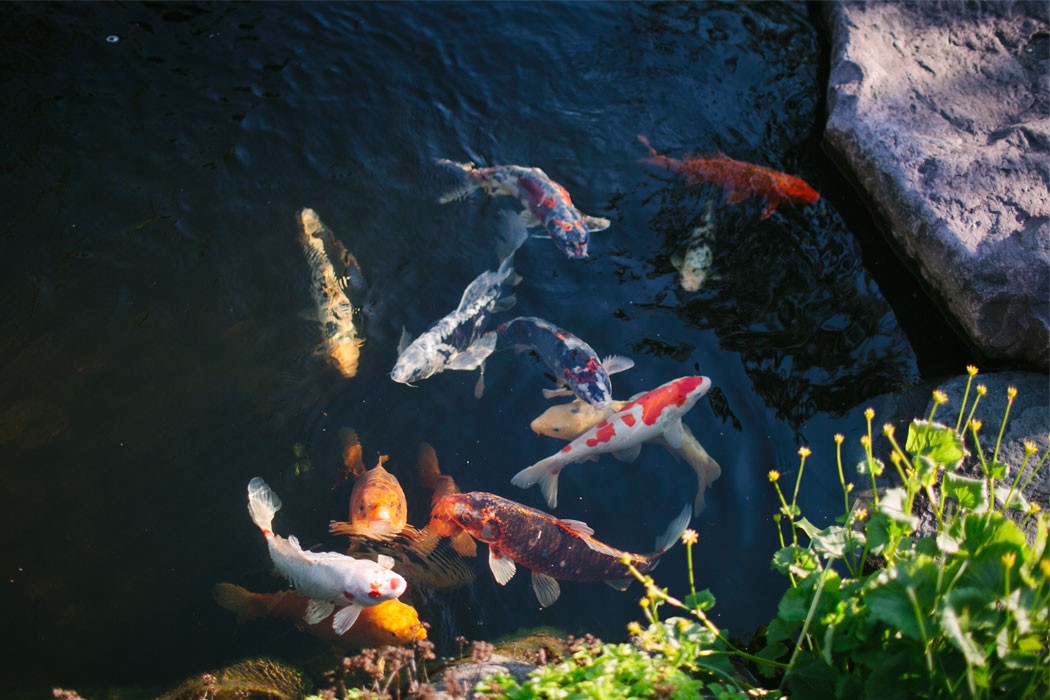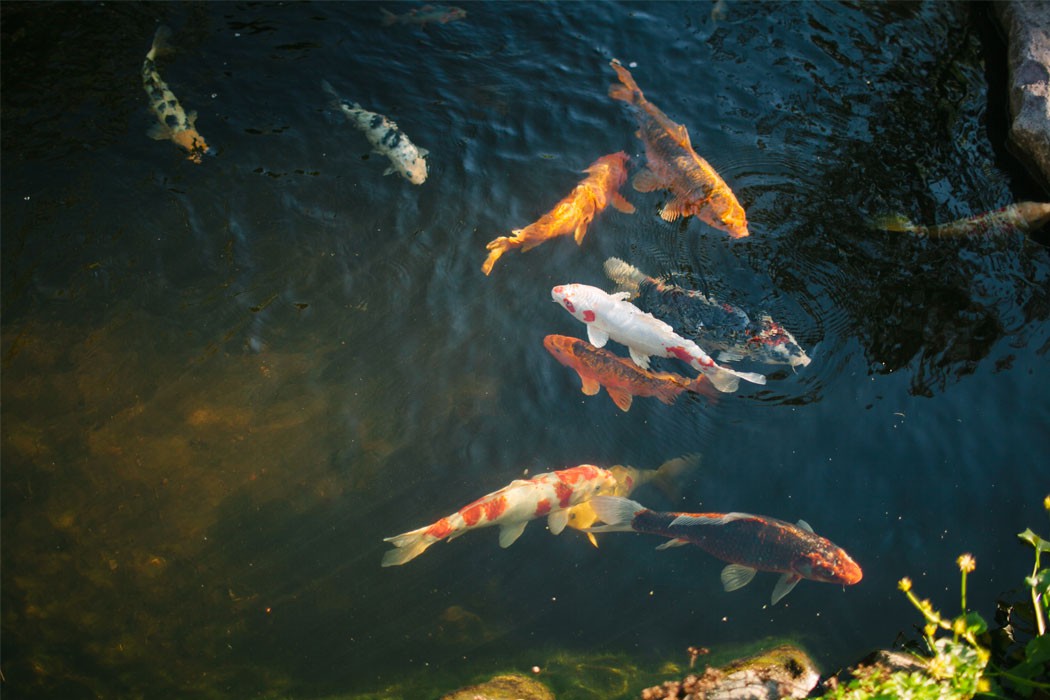Add a splash of color to your backyard pond
Even in Wisconsin’s cooler climate, many homeowners are adding an upscale accent to their backyard landscaping, filling their water features with colorful, calming koi.
A type of carp, koi come in a rainbow of hues and patterns that make them as much art as low-maintenance pet. After noticing subtle color variations in carp, Japanese rice farmers began inter-breeding them, creating the color spectrum we have today. Considered symbols of good luck in Japan, koi were first brought to North America in the early 20th century
Deb Gunderson, whose husband, Jay, designed and built their 7,000-gallon koi pond in their Mount Horeb backyard, says their water feature serves as the focal point of the yard and helped complete the Japanese vibe they wanted.
“Koi ponds are an essential element to Japanese gardening,” Gunderson says. “They provide the soothing sounds (waterfall, stream and fish/frog/toad noises) wherever we are in the yard.”
Gunderson says their pond also reminds her husband of his Minnesota childhood, when his explorer missions often ended at a nearby pond.
“A favorite part of our summer is sitting by the pond at night and feeding the koi, who are always hungry and seem to have endless appetites,” Gunderson says.
When winter inevitably arrives, the Gundersons use a cleverly designed system of underground pipes to usher their fish from the pond to a basement enclosure for the season. But you can also add a heater to your koi pond and leave the fish in there all year long, experts say.
Here are five more important things to know about building your own koi pond:
1. Classification and Color: With hundreds of varieties, koi are classified by their color patterns and scales. Each variation has a Doitsu (scaleless) and Gin Rin (scaled) version. Many hobbyists select their fish based on their pond’s color pattern.
2. Bigger is Better: Koi grow according to their environment, so a larger pond will allow them to develop. Also, it is easier to maintain water quality and prevent algae in a bigger body of water, and a deeper pond is less likely to freeze during the winter.
3. Cold Fish: During their winter hibernation period, koi simply float in water and do not eat. To prevent your fish from freezing, prepare an aquarium inside for them or have a heater installed in your pond.
4. Fish Food: These omnivores enjoy fresh fruit like oranges and watermelon. While you can buy special koi food online, Gunderson suggests purchasing a large bag of game fish food from pet stores such as Mounds Pet Food Warehouse.
5. Fish Markets: Midwest Koi, located 25 miles Northwest of Green Bay, offers a variety of koi at all grades that you can select from their on-site pens. The company also offers education on how to raise the fish and care for your pond, along with healthcare products and food. midwestkoi.com. Locally, The Bruce Company in Middleton carries supplies needed for creating and maintaining a pond. Brucecompany.com.







